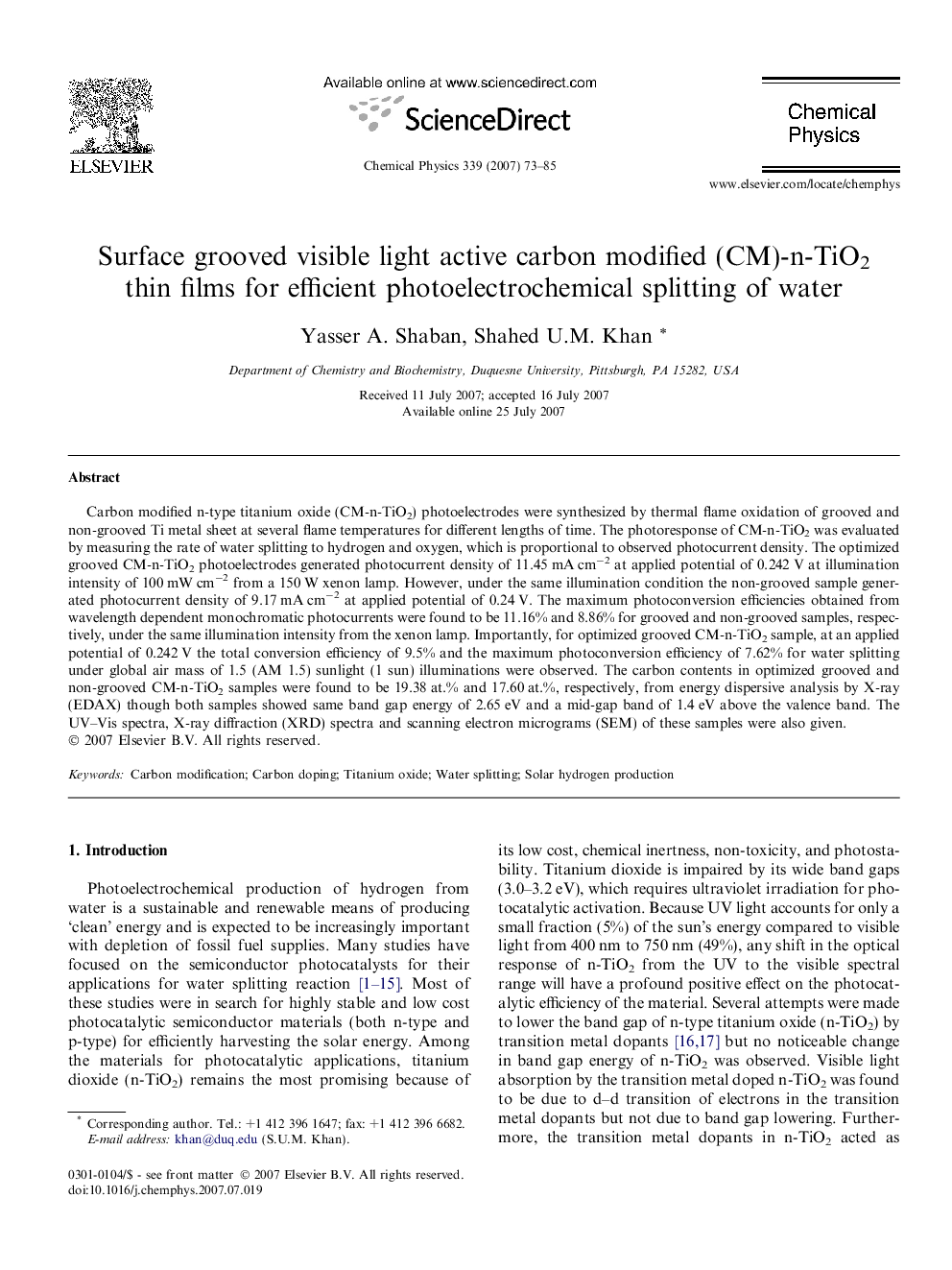| Article ID | Journal | Published Year | Pages | File Type |
|---|---|---|---|---|
| 5376320 | Chemical Physics | 2007 | 13 Pages |
Abstract
Carbon modified n-type titanium oxide (CM-n-TiO2) photoelectrodes were synthesized by thermal flame oxidation of grooved and non-grooved Ti metal sheet at several flame temperatures for different lengths of time. The photoresponse of CM-n-TiO2 was evaluated by measuring the rate of water splitting to hydrogen and oxygen, which is proportional to observed photocurrent density. The optimized grooved CM-n-TiO2 photoelectrodes generated photocurrent density of 11.45Â mAÂ cmâ2 at applied potential of 0.242Â V at illumination intensity of 100Â mWÂ cmâ2 from a 150Â W xenon lamp. However, under the same illumination condition the non-grooved sample generated photocurrent density of 9.17Â mAÂ cmâ2 at applied potential of 0.24Â V. The maximum photoconversion efficiencies obtained from wavelength dependent monochromatic photocurrents were found to be 11.16% and 8.86% for grooved and non-grooved samples, respectively, under the same illumination intensity from the xenon lamp. Importantly, for optimized grooved CM-n-TiO2 sample, at an applied potential of 0.242Â V the total conversion efficiency of 9.5% and the maximum photoconversion efficiency of 7.62% for water splitting under global air mass of 1.5 (AM 1.5) sunlight (1 sun) illuminations were observed. The carbon contents in optimized grooved and non-grooved CM-n-TiO2 samples were found to be 19.38Â at.% and 17.60Â at.%, respectively, from energy dispersive analysis by X-ray (EDAX) though both samples showed same band gap energy of 2.65Â eV and a mid-gap band of 1.4Â eV above the valence band. The UV-Vis spectra, X-ray diffraction (XRD) spectra and scanning electron micrograms (SEM) of these samples were also given.
Related Topics
Physical Sciences and Engineering
Chemistry
Physical and Theoretical Chemistry
Authors
Yasser A. Shaban, Shahed U.M. Khan,
